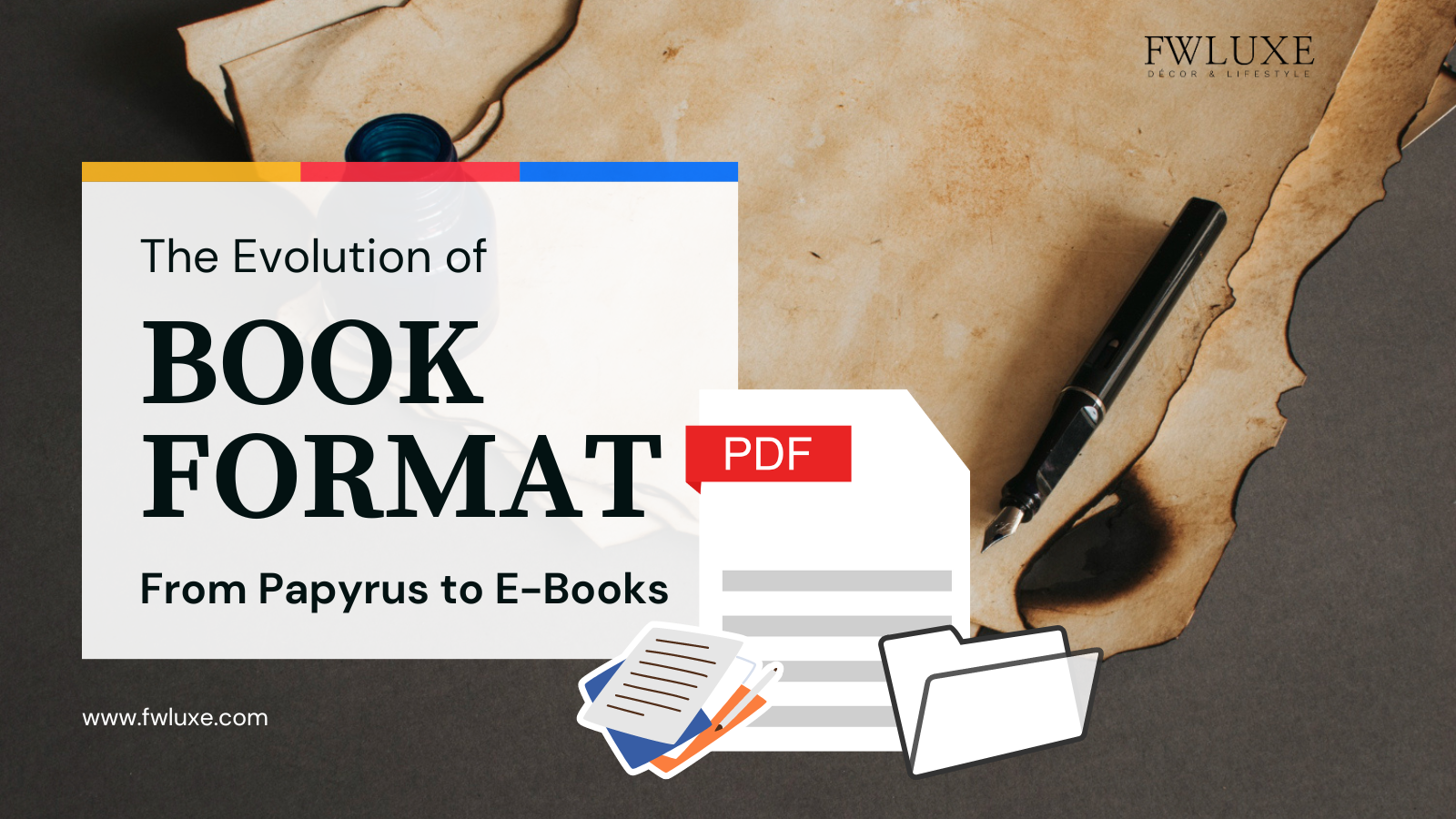The Evolution of Book Formats: From Papyrus to E-Books
By Mayank Prajapati // 11th April 2023
Introduction
For centuries, books have been an integral part of human culture, passing down knowledge, stories, and ideas from generation to generation. Over time, the format of books has evolved dramatically, from the earliest manuscripts on papyrus to the digital e-books of today. In this article, we will explore the fascinating history of book formats and the impact of technology on the way we read and learn.
The first books were written on papyrus, a material made from the pith of the papyrus plant. These scrolls were used in ancient Egypt and Greece to record and preserve important texts. However, they were difficult to read and cumbersome to handle, with each scroll containing only a limited amount of information.
The next significant advancement in book format came with the invention of the codex, a bound book made up of individual pages. This format, first used by the Romans in the first century CE, allowed for more straightforward navigation and organization of information. The codex quickly became the standard book format, and it remains so.
Over time, advancements in printing technology allowed for the mass production of books, making them more accessible to the public. The invention of the printing press in the 15th century was a significant turning point, as it allowed for books to be produced more quickly and at a lower cost. This led to a surge in literacy and the spread of knowledge across Europe.
The 20th century brought further changes to the format of books with the invention of new materials such as paperbacks and hardcovers. Paperbacks, first introduced in the 1930s, were cheaper to produce and easier to transport than hardcovers, making them more accessible to a broader audience. On the other hand, hardcovers were seen as a sign of prestige and were often used for more expensive or limited-edition books.
The digital age has brought about the most significant change in book formats. The advent of e-books, digital versions of printed books that can be read on electronic devices such as e-readers, smartphones, and tablets, has revolutionized the publishing industry. E-books are often cheaper to produce and distribute than printed books, and they offer readers the convenience of carrying an entire library wherever they go.
However, the rise of e-books has also led to concerns about the future of printed books and the impact on the publishing industry. Many people still prefer the tactile experience of reading a printed book, and the decline in print sales has had a significant impact on the industry.
Conclusion
The evolution of book formats from papyrus to e-books has been a fascinating journey that has shaped how we read and learn. While the future of books may be uncertain, one thing is clear: books will continue to be a vital part of human culture, no matter what format they take. Whether we prefer the feel of a printed book or the convenience of an e-book, the power of the written word will endure.
If you're looking to incorporate books into your interior design, FW Luxe can help. Our team of expert designers can help you create a space that balances functionality and style, with bookcases and shelves that fit your unique needs and preferences. Contact us today to schedule a consultation.



